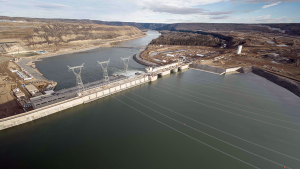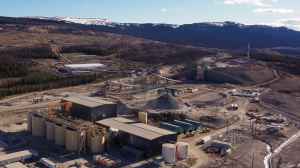Anticipated changes to the B.C. Building Code (BCBC) are expected to affect the seismic design of new and retrofitted structures and likely escalate costs for developers, particularly for projects on Vancouver Island, warns Leon Plett, a structural engineer and managing principal at RJC Engineers in Victoria.
“When the design for seismic loads increase, that means the strength of the building has to increase to accommodate those greater loads,” he explains. “So, in a concrete tower where you might have a reinforced concrete core sitting on caissons or a large footing, those core walls, for instance, will go from a metre thick under the current code to something like 1.5 metres in the future code.
“We’ve run cost-analysis for a typical 30-storey residential building in Victoria and the increase is about $1.2 million in hard costs. The building has to be that much larger so there’s another $1 million in lost square footage. Two to $2.5 million on a 200-unit residential building is quite significant.”
Plett, who leads the Victoria structural engineering team at RJC, says changes to the BCBC were supposed to come into force in December but have been pushed back to 2024.
The BCBC dictates how new construction, building alterations, repairs and demolitions are done to all buildings in B.C., except for the City of Vancouver which has its own building bylaw, Treaty First Nations that do not reference the building code in their agreements, and federal lands under the National Building Code.
Plett says the changes are coming because geophysicists have determined there is an increase in the seismic hazard level due to their discovery of more frequent earthquakes in B.C.’s geological record.
“Our geophysicists and geologists are working on this all the time. They’re doing seabed evaluations, looking at crustal movements and doing all of that stuff. As their knowledge increases, it feeds into the risk.”
Several years back, scientists also discovered a new fault line that runs through the most populated areas of southern Vancouver Island. The Devil’s Mountain Fault runs for about 125 kilometres from near Darrington in the foothills of the Cascade Mountains in Washington to just south of Victoria.
“You add all of those things together and what it means in Victoria, depending on site class or depending on soil conditions on the site, between a 30- and 70-per-cent increase in seismic loads,” explains Plett. “It’s a change in the probability of a damaging earthquake. So, they’ve discovered that the frequency of damaging earthquakes in southwestern B.C. is more than they thought.”
To accommodate new seismic designs, buildings need more room for increased insulation and force-resistant elements inside the structure, which adds to the cost of a building.
Plett figures the seismic component of the anticipated code changes will add five to 10 per cent to total project hard costs on an average residential project. The team at RJC has come up with that figure by running cases studies with clients on a number of projects.
Plett says the public needs to be aware of the anticipated changes because, in the middle of a housing crisis, it will only add to the cost of building structures.
“We want the minister of housing to understand that in a housing crisis all of these things are adding cost. This isn’t developer greed or rental-provider greed that’s causing it, it’s legislative requirements.”
From a developer and owner standpoint there is a lot of frustration with the anticipated change, says Plett.
“They feel this is an arbitrary additional cost that’s thrown their way with no say on their side, but it just adds to the cost. We know that these are all good things, but it adds to the cost of new development which, in the middle of a housing crisis, is very difficult.”
He reiterated the changes to seismic designs will apply only to new buildings and retrofits, and there is no requirement in the code for owners to upgrade existing buildings. However, his personal view is that if safety is the reason, the province would be better off making upgrades mandatory for existing buildings rather than just increasing regulation for new projects.
“Why is it that we’re putting all of this requirement on new buildings? Just because it’s easier to do? In some ways, we’re disincentivizing owners of poorer-quality existing housing stock from doing anything about those projects. It seems a little bit backwards.”
Plett expects that, as a result of the impending changes, the industry will adapt and come up with design, technology and construction innovations that can withstand higher seismic forces at minimal cost.
For example, engineers are already changing the way shear walls are designed in mid-rise wood-frame buildings to allow for a thinner assembly that has a higher force resistance.
“What we’re going to see is an industry adaptation to the higher loads through innovation in structural design. That’s where we see our role.”











Recent Comments
comments for this post are closed